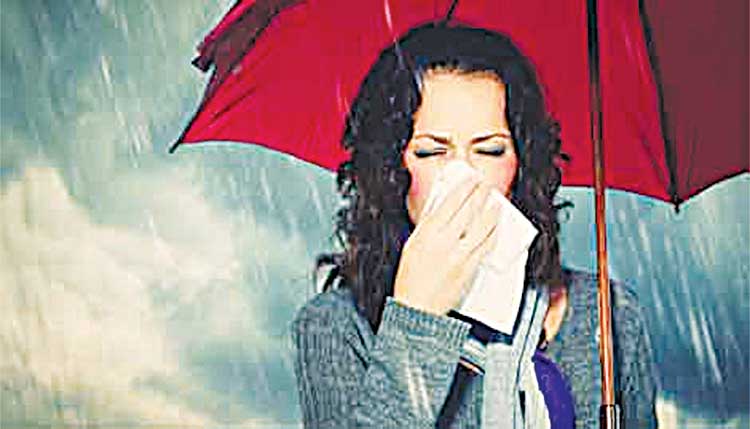Monsoon brings great relief for most people. With the showers bringing about the much-needed respite from the intense heat of the summers, for those with asthma, it is an ordeal as it worsens their condition. The seasonal exacerbation of asthma is a well-known phenomenon. Asthma is a disease that can be triggered with an allergic reaction from allergens, such as mould/fungus, furry pet, dust mites, and viral infection. Monsoon being one of the major triggers. Less sunlight during the rainy season may lead to Vitamin D deficiency which is one of the contributing factors in aggravation of asthma attacks1. The cold environment during monsoons can also contribute to the worsening of asthma signs and symptoms. The dampness in the surrounding leads to fungus and can trigger allergies which may further lead to an asthma attack. Additionally, the season also brings in higher chances of viral infections and can trigger allergens and cause the symptoms to become worse.
Dr Bhagwan Mantri, Consultant Pulmonologist, Moolchand Hospital, New Delhi says, “Every monsoon there is a significant increase in asthma admissions, especially in children. In the current scenario, when patients are not visiting hospital or consulting doctors regularly, keeping check on asthma exacerbation becomes crucial. Thus, it becomes more important to keep a tab on asthma and best to keep good advice handy to manage asthma during monsoon. Wheezing, coughing and shortness of breath are all symptoms of asthma, which is a chronic respiratory disease, arising due to inflammation of the air passages in the lungs. A person suffering from asthma experiences constriction in the airway passages, making it difficult for patients to breathe normally.”
According to Dr. Sumeet Singhania, Consultant Pulmonary Medicine at Kokilaben Dhirubhai Ambani Hospital, Mumbai said, “Visits to the emergency room for the treatment of asthma attacks are more frequent during the rainy season, increasing at one to two months after the annual increase in humidity and decreasing in the dry season. This correlation raises the possibility of a causal association with spread of house dust mites and viral infection. Hence, it is important to seek good advice from doctors for good breathing during monsoon to manage asthma.” Here are a few other reasons that make the monsoon a particularly difficult time for people living with asthma –
• During the monsoons, there is a possibility in increase in viral infection. Various viruses and bacteria enter in the environment. Cold and flu are widespread during the rainy season which makes it hard for asthma patients.
• Increased fungus. constant rain increases the growth of fungus in the surroundings. In the rainy season, these fungus/ moulds increase due to various reasons such as dampness in the air. Its adverse effect is mostly seen at night.
• House dust mites are most common allergen that increases during monsoon because of increased humidity. The cloudy weather means less sun light, which leads to very little sun drying of bed sheets, which increases house dust mite load.
How to manage asthma during monsoon- Avoid triggers, Keep inhalers handy, Consult doctors.
Take your medication regularly as advised by physician
Despite increasing prevalence, asthma remains one of the poorly controlled diseases. Inhalers have emerged as an effective treatment to manage asthma, compared to oral therapy. With inhalers, the drug reaches the lungs directly instead of flowing through the bloodstream and other organs of the body. Thus, there is less drug dose required and hence fewer side effects. Don’t let asthma dampen your spirit this monsoon season, control asthma with inhalation therapy.

